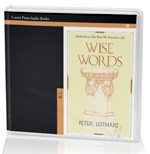Mark 16: The Resurrection of the King
Introduction
Here we come to the end of the gospel, the resurrection of King Jesus. The final identification of who this man was. This is God in flesh, and therefore death could not hold him.
A Note about Manuscripts
Some of your Bibles may have verses 9-20 bracketed or perhaps you may even be missing them. Two of the earliest manuscripts that we have do not include the last 11 verses of Mark. The King James and versions that follow the ‘Received Text’ follow the critical work of Erasmus and before him the Byzantine tradition of manuscripts. While it would be foolish to be dogmatic about these things, there is value in placing greater trust in the church rather than the academy’s modern notions of ‘biblical’ or ‘textual criticism’. Mark may have added this portion to a later manuscript or authorized another disciple to complete the text. Or it may in fact be a much later addendum, but who are we going to trust?
The First Witnesses
Mark records that the first witnesses of the empty tomb are Mary Magdalene and Mary the mother of James. They intend to anoint the body of the Lord, but find a young man in white garments instead. While there is no explicit identification of the “young man” it is striking that the last reference to such a person is in the garden just after Christ’s betrayal and arrest. There, he left his clothes and fled naked; here he is seated peacefully and clothed in glorious raiment. While these two characters may not be the same person, the imagery is clear. Adam’s shameful nakedness has been clothed in a long white robe. The narrative of this episode ends with the women fleeing in fear and not telling anyone; this reminds us of the secret motif found elsewhere in the gospel. Yet, this time it is disobedience. Apparently Mary Magdalene came back to the tomb or perhaps never left altogether, but she is remembered as being the first witness of the risen Lord (v. 9-10).
Two or Three Witnesses
In the law, God required independent, collaborating witnesses to establish legal fact (Deut. 19). This high standard of justice is no less present here where there are two independent sources testifying to having seen Jesus alive (Mary and the two disciples). While the other gospels place emphasis in different ways, Mark is quite emphatic about the disciples’ unbelief. And this is what Jesus’ rebuke consists of when he finally appears to all of them, not believing those who had seen him. It is no accident that this rebuke is followed directly by the great commission. This rebuke is implicitly directed at those who would hear the preaching of the disciples, the likely first readers of Mark’s gospel.
Confirming the Word through Signs
Some have taken Christ’s words concerning signs to be a prescription for what belief looks like, and where these signs are missing belief must be absent. But we know that this is not the case because Acts records what belief looks like and it is not always accompanied by these signs and never all of them (e.g. Acts 13:13ff, ch.16-17), although all or most of these signs do show up at some point in the book of Acts. Church history confirms that these signs did often confirm the word of missionaries, and in Acts we see mini-Pentecosts breaking out as the gospel goes out from Jerusalem. But Mark’s last statement is important: these signs were confirming the Word. These signs are descriptive of what God sometimes sent (and sends) when the Word needs confirmation, but that is quite different from saying that these signs are prescribed for every last believer.
Conclusion and Application
Signs confirm the Word: this is the pattern of the sacraments confirming and attesting to what the word declares. Baptism affirms that we have passed from death into life through the life, death, and resurrection of Jesus. The Eucharist affirms that we are members of the New Kingdom and that the life, death and resurrection of Jesus Christ is the first fruits of heaven on earth. Genesis 1 attests to this patter: first the word then the created reality. The New Creation follows this same pattern as well: first the cross then the resurrection, first faith then good works.
Monday, November 06, 2006
Posted by Toby at 5:42 AM
Labels: Bible - Exodus, Bible - Mark, Sermon Outlines
Subscribe to:
Post Comments (Atom)

























No comments:
Post a Comment